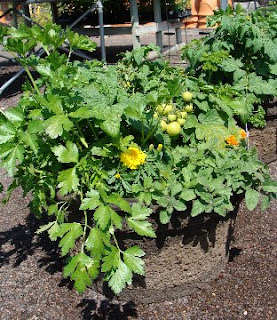Fall will turn into
winter this month. It may not always be the most comfortable time to be
planting anything in your landscape, but it is a great time for the plants.
Trees and shrubs are completely dormant now, so the concept of transplant shock
does not apply.
Trimming or pruning of
some of your trees and shrubs can be done now. Basically, it breaks down like
this, if the tree or shrub flowers before the 1st of June don’t
touch it now. If it flowers after the 1st of June, you can safely
cut it now. Resist the urge to cut back everything. Most perennials benefit from
adding a layer of mulch or dead leaves. If you had any fungus or disease
problems in an area, go ahead and cut back the plants in that area and rake up
the debris. Keep your ornamental grasses up until mid-March.
Roses: a winter
“hair-cut” can be given, but don’t cut them back all the way. Some winters can
be so cold that the roses could get winter die-back which would need to be
removed in the spring anyway, so plan on your heaviest rose trimming in spring in
early April. Apply a thick layer (10-12”) of mulch at the base of your roses
now.
Plants get “chapped
lips” too. Cold, dry winter winds and bright winter sun make our skin chapped
and unhealthy. Those winds have a devastatingly similar effect on your plants,
which are out in the winds all winter. No wonder your evergreens don’t look so great
come spring. This drying effect is called desiccation. To fight desiccation,
choose the right plants for windy, dry areas. Make sure to water your evergreens
well through early December, before the ground freezes. Mulch your plants for
winter to retain soil moisture as well as soil temperature. Use an
anti-desiccant like Wilt Stop by Bonide. These products coat leaves and needles
to slow down the loss of moisture.
Here are a few tips on
winter houseplant care. When the heat goes on and the daylight becomes shorter.
It may be necessary to move the plants to a different place in the home and to
give them different treatment from that given during the summer. Flowering
plants need at least half a day of direct sunlight. Cacti and many succulents
require a sunny location, and crotons need direct sun to maintain the
decorative color. The ideal temperatures for foliage plants are 68-70 degrees
during the day and slightly lower at night. Remember, windowsill locations are
much colder during the winter and plants may need to be moved to prevent them
from getting chilled. The amount of water the houseplants need declines during
winter, so increase the amount of time between watering. Reduce fertilizing as well.
Some of the plants in
your landscape can help you decorate for the Christmas season as you prune them
for next year. Holly and Boxwood can be trimmed now with some of the cuttings
used to accent wreaths or live indoor plants. Some of the growth of evergreens
such as White Pine, Norway Spruce, and even some of the seed heads of ornamental
grasses can be used to make a harvest wreath or basket for your front door or
porch. Talk about recycling! After Christmas, you can take them to your compost
bin for future fertilizer! Along with these Holiday tips, here are a few other
ideas for the month:
·
Use
caution when spreading salt or calcium on ice or snow packed walks or
driveways. Salt can damage lawns and plantings, calcium is much safer to use.
Be sure to designate areas to for piling snow from plowing in advance to
prevent damage to trees, shrubs and lawns.
·
Continue
to feed our fine feathered friends and place heated birdbaths with fresh water
out for them.
Again, I wish you and
your family a very Blessed Christmas season.
Let’s get to work on planning that beautiful garden scene for next year!
See you in the
Garden…………..
Sandi Hillermann
Mcdonald














